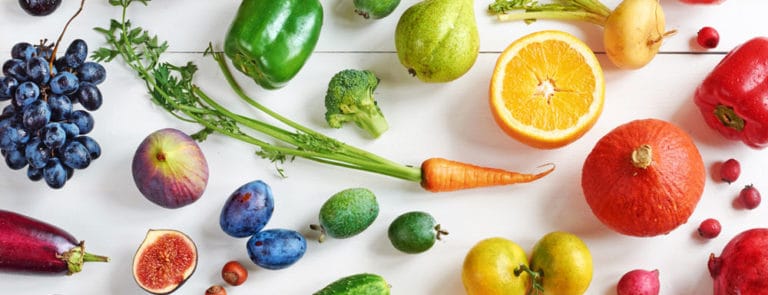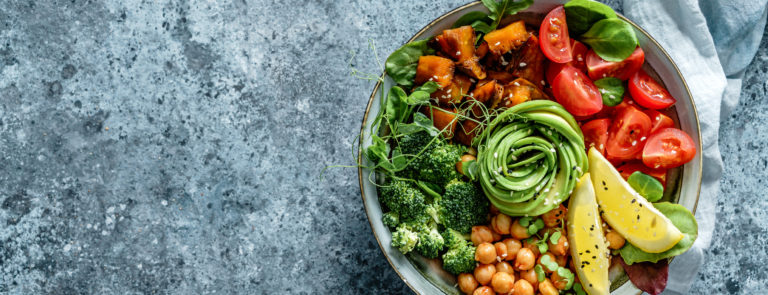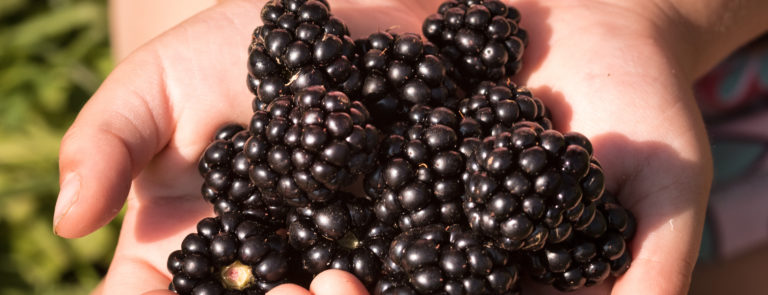15% off €35 OR 20% off €45
Code:SHOP
Minerals in food: Foods high in minerals

We should be able to get all of the 15 major minerals – including calcium, phosphorus, magnesium, sodium, potassium, chloride & sulphur – from our diet.
Summary
1Which minerals do I need?
Minerals are divided into two groups: major and trace minerals. Major minerals are ones we need more than 100mg of a day, while trace minerals are...
2The importance of getting minerals from our diet
It’s important we get minerals, as well as vitamins and other nutrients from the food we eat. Like vitamins and other nutrients, minerals play key...
3What minerals are found in food?
Wondering which of these minerals you can obtain through your diet? Food sources of essential minerals: 1. Calcium 2. Magnesium 3. Iron 4. Sodium...
Want to increase your mineral intake? Most of us know we should be getting certain vitamins every day, such as Vitamin C or Vitamin D, but minerals in food remain a bit of a mystery. And if we don’t know what they are, how can we make sure we’re eating enough of them?!
Discover the best food sources of minerals, including, magnesium, iron, calcium, sodium and more, right here…
What are minerals?
Minerals are inorganic substances, meaning they’re not living plant or animal sources.1 They’re essential for a range of functions in the body, including maintaining strong bones and teeth, normal nerve function and building body tissues.2
While vitamins and minerals are both important for our health, they aren’t the same thing.
Vitamins are organic and can be broken down by heat, air or acid. While minerals are inorganic and retain their chemical structure.3
One of the most effective ways of giving your body the minerals it needs is by eating a mineral-rich diet.
And if your diet is low in one particular mineral, it’s not uncommon for it to be lacking in other minerals too.
The best way to avoid this, is by eating a varied diet that contains as many different vitamins, minerals and nutrients as possible.4
According to research gathered by the National Diet and Nutrition Surveys, some sub-groups of people are low in some minerals.
For instance, men can be low in potassium, magnesium and zinc, and women can be lacking in iron, calcium, copper and iodine.
In some circumstances, it’s possible for some people to have low mineral levels and not show any symptoms however, this isn’t always the case.
For instance, adolescent girls with particularly heavy periods can be deficient in iron due to the monthly blood loss they are experiencing.
Meanwhile, vegans and vegetarians can have low mineral levels because they are only eating certain foods. As a result, this may lead to iron deficiency anaemia over time.
Meanwhile, research has also found adolescents and younger and older women can sometimes be lacking in calcium, which may lead to osteoporosis, particularly in older women.
This is due to the fact women have a lower bone density than men, so need a regular source of calcium and Vitamin D to keep their bones sturdy.5
What are macro minerals?
In order to function healthily, the body needs essential minerals, which are divided up into two main categories:6
- Major minerals (also known as macrominerals) and;
- Trace minerals (also known as microminerals).
Both of these mineral groups are equally important for our overall health, but we don’t need as much of the trace minerals as we do the trace minerals. But this doesn’t mean trace minerals are less important in any way.
If you’re eating a healthy, balanced diet, then you should be getting all of the essential minerals you need from your food.
And if you’re curious about what macro minerals and micro minerals look like in reality, we’ve listed some examples of them below for you to take a look at.
7 macrominerals AKA major minerals
- Sodium
- Chloride
- Potassium
- Calcium
- Phosphorous
- Magnesium
- Sulphur
7 microminerals AKA trace minerals
- Iron
- Zinc
- Iodine
- Selenium
- Copper
- Manganese
- Fluoride
Summary
- Minerals are inorganic substances (they’re not living plant or animal sources)
- They’re essential for a range of bodily functions, including maintaining strong bones and teeth, normal nerve function and building body tissues
- Essential minerals fall into two different categories – major and trace minerals
Which minerals do I need?
Minerals are divided into two groups: major and trace minerals. Major minerals are ones we need more than 100mg of a day, while trace minerals are ones we need less than 100mg of a day.7
Major minerals include:
- Calcium - important for healthy bones and teeth; helps muscles relax and contract; important in nerve functioning, blood clotting, blood pressure regulation and immune system health
- Magnesium - needed for making protein, muscle contraction, nerve transmission and immune system health
- Sodium – required for proper fluid balance, nerve transmission and muscle contraction
Trace minerals include:
- Iron – is part of the molecule, haemoglobin, that’s present in red blood cells that carries oxygen around the body. It’s also needed for energy metabolism
- Zinc - needed for making protein and genetic material, as well as wound healing, foetal development and immune system health
- Selenium – is an antioxidant that helps protect the body from damage caused by harmful molecules
The importance of getting minerals from our diet
It’s important we get minerals, as well as vitamins and other nutrients from the food we eat.
Like vitamins and other nutrients, minerals play a key role in helping our body develop and function as it’s supposed to.

Overall, we need minerals to:
- Build strong bones and teeth
- Control body fluids inside and outside cells
- Turn the food we eat into energy
All in all, there are 15 major minerals, which are found throughout the blood, bones and tissues in every living cell.
The 15 major minerals are: Calcium, phosphorus, magnesium, sodium, potassium, chloride and sulphur. You only need small amounts of trace minerals - iron, manganese, copper, iodine, zinc, cobalt, fluoride and selenium.8
Mineral sources - where can we get minerals from?
For most people, diet is their main mineral source, with a healthy, balanced diet being all that’s needed to maintain their mineral levels.
And while it’s important your mineral levels are ok, it’s equally important your vitamin levels are too because certain vitamins and minerals support each other.9,10
For instance, Vitamin D enables the body to extract calcium from food that’s travelling through the digestive tract rather than sourcing it from bones.
Vitamin C also helps with the absorption of iron. But there are instances where vitamins and minerals may not work co-operatively, e.g. Vitamin C can block the absorption of the mineral, copper.
And having too much of the mineral, manganese in our system may make iron deficiencies worse. Meanwhile, too much sodium can lead to losing excess calcium when your body excretes the surplus sodium.
The interaction between vitamins and minerals and our diet can influence our mineral levels. On the subject of diet, vegans and vegetarians may also be lacking in certain vitamins and minerals due to their restricted diet.
Certain health conditions and medications can also lead to people not absorbing vitamins and minerals properly and deficiencies forming. In these instances, mineral supplements are seen as way of helping get those levels back up again.
Handpicked content: What is Vitamin D and why is it so important?
Summary
- There are 15 major minerals, which are found throughout the blood, bones and tissues in every living cell
- They are calcium, phosphorus, magnesium, sodium, potassium, chloride and sulphur, and the trace minerals, iron, manganese, copper, iodine, zinc, cobalt, fluoride and selenium
What minerals are found in food?
Wondering which of these minerals you can obtain through your diet?
Food sources of essential minerals
Our bodies contain more calcium than any other mineral. It’s vital for healthy bones and teeth, blood clotting and muscle contractions.11
Where to find it: Dairy products, such as yoghurt and cheese, and green leafy veg including kale, broccoli and cabbage.12
Handpicked content: What can I do with kale?
Magnesium is involved in over 300 functions in the body, including helping bones absorb calcium, turning food into energy, and healthy nerve and muscle function.13,14
Where to find it: Green leafy vegetables, such as spinach, nuts, brown rice, wholegrain bread and dairy products.15
Handpicked content: Healthy ways to cook and eat spinach
We need iron to produce haemoglobin, a protein in red blood cells that transports oxygen around the body. Iron also supports our immune system.16
Where to find it: The richest food source is meat, but vegetable sources include dark green veg like spinach and broccoli, beans, nuts, and dried fruit such as apricots.17
Have some Vitamin C with plant sources to help your body absorb the iron more efficiently.18
Handpicked content: How to boost your immune system naturally
Sodium chloride – salt to the rest of us – is one mineral we’re eating too much of. Although we need it for balancing fluids and body salts, too much is linked to high blood pressure.19
Where to find it: Salt is often added to ready meals, bread, bacon and some breakfast cereals. You shouldn’t eat more than 6g of salt a day – most of us are eating 8g – so keep an eye on your intake.
Handpicked content: Are you eating too much salt?
Potassium, which is closely related to sodium, is needed by all plants and animals.
Together, potassium and sodium control the electrical potential of the nervous system, allowing nerve signals to be transmitted and muscles to contract regularly.
Where to find it: Fresh fruit and vegetables, particularly potatoes, meat, milk, wholemeal flour, coffee, tea and cereals. Coffee is a primary potassium source; one cup of coffee contains 45mg of potassium.
Phosphorus is needed by the enzymes in our body that are responsible for metabolising fat, protein and glucose.
It helps the body to produce and store energy and helps with the creation of nucleic acids for cell division.
Where to find it: In most food, especially meat. Other phosphorus food sources include dairy, pulses, milk, leafy green vegetables and most fruits.
What fruits are high in minerals?
Quite a few different fruits are classed as being good mineral sources too, with some containing several different minerals. They include:20
- Tomatoes
1 cup of tomatoes contains the minerals, chloride and potassium. Tomatoes are also a good source of Vitamin C too.
Potassium helps regulate blood pressure and heart rhythm, hydrate cells and aids digestion. Chloride helps maintain fluid balance.
- Berries
In 1 cup of purple, red or blue berries (e.g. blueberries or raspberries) you’ll find calcium, copper, iron, manganese and potassium.
Research has found eating berries helps reduce the risk of developing inflammation, Type 2 diabetes and cardiovascular disease. They also contain biotin, Vitamin B6 and Vitamin C.
- Tropical and citrus fruits
1 cup of tropical (e.g. mangoes, kiwi and pineapple and bananas) and citrus fruits (oranges, grapefruit and lemons) contains chromium, magnesium, manganese and potassium.
They’re also recognised as being a good source of folate and Vitamin C. Meanwhile, bananas alone are packed with a wide range of minerals, including potassium, magnesium and manganese.21
Summary
- Minerals are present in all sorts of different food sources, ranging from meat and dairy, to vegetables and coffee
- Certain fruits, such as berries and citrus fruits, also contain minerals too
Takeaway
While it’s easy to focus on making sure you’re getting your quota of vitamins from your diet every single day, it’s also important to make sure you’re doing the same with minerals too.
Like vitamins, they’re responsible for doing a whole lot of fundamental good for our bodies, but it is possible to be low in one or more of them.
Minerals are responsible for making sure our bodies develop healthily and continue to stay healthy throughout our entire lives.
Different minerals are responsible for making different essential things happen every single day.
This ranges from building strong bones and teeth and controlling internal and external cells fluid levels, to turning the food we eat into energy that fuels our body.
Certain minerals work in conjunction with certain vitamins, which is why it’s important to keep a close eye on both your vitamin and mineral intake if you can.
Eating a varied and healthy diet is generally considered as being the best way to keep your mineral intake up, but if you’re find you’re lacking in certain areas, supplements can help.
Always speak to your GP first before taking any supplements.
The advice in this article is for information only and should not replace medical care. Please check with your GP or healthcare professional before trying any supplements, treatments or remedies. Food supplements must not be used as a substitute for a varied and balanced diet and a healthy lifestyle.
Last updated: 11 June 2021
- https://www.health.harvard.edu/staying-healthy/the-best-foods-for-vitamins-and-minerals
- https://www.nutrition.org.uk/nutritionscience/nutrients-food-and-ingredients/minerals-and-trace-elements.html
- https://www.helpguide.org/harvard/vitamins-and-minerals.htm
- https://www.nutrition.org.uk/nutritionscience/nutrients-food-and-ingredients/minerals-and-trace-elements.html
- https://www.medlife.com/blog/calcium-deficiency-in-women/
- https://myhealth.alberta.ca/Health/Pages/conditions.aspx?hwid=ta3912
- https://www.netdoctor.co.uk/healthy-eating/a10839/sources-of-minerals/
- https://www.uofmhealth.org/health-library/ta3912
- https://www.nhsinform.scot/healthy-living/food-and-nutrition/eating-well/vitamins-and-minerals
- https://www.hemophiliafed.org/news-stories/2020/10/essential-nutrients-vitamins-minerals/
- https://www.helpguide.org/harvard/vitamins-and-minerals.htm
- https://www.health.harvard.edu/staying-healthy/the-best-foods-for-vitamins-and-minerals
- https://www.health.harvard.edu/staying-healthy/the-best-foods-for-vitamins-and-minerals
- https://www.nhs.uk/conditions/vitamins-and-minerals/others/#magnesium
- https://www.nutrition.org.uk/nutritionscience/nutrients-food-and-ingredients/minerals-and-trace-elements.html
- https://www.nhs.uk/conditions/vitamins-and-minerals/others/#magnesium
- https://www.bda.uk.com/foodfacts/iron_food_fact_sheet.pdf
- https://www.bda.uk.com/foodfacts/iron_food_fact_sheet.pdf
- https://www.nutrition.org.uk/nutritionscience/nutrients-food-and-ingredients/minerals-and-trace-elements.html
- https://www.nutrition.org.uk/nutritionscience/nutrients-food-and-ingredients/minerals-and-trace-elements.html
- https://www.healthline.com/nutrition/foods-with-minerals#15.-Tropical-fruits



